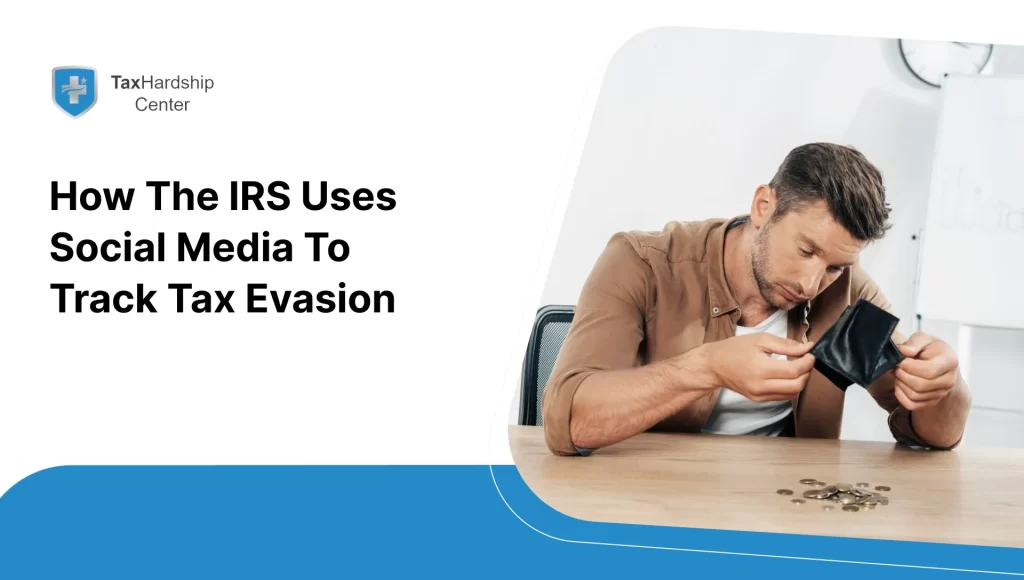Navigating the world of retirement planning can be complex, with various plans and accounts available to help you save for your golden years. One increasingly popular option is the Roth 401(k), a powerful tool in wealth management and retirement savings. Whether you’re a seasoned investor or just beginning to delve into personal finance, this guide will help you understand how Roth 401(k)s work and how they can fit into your retirement strategy.
What Is a Roth 401(k)?
A Roth 401(k) is a retirement savings plan that combines the features of a traditional 401(k) with those of a Roth IRA. Many employers offer this plan, which allows you to contribute after-tax dollars. This means that you now pay taxes on your contributions in exchange for tax-free withdrawals in retirement. This retirement account is particularly beneficial for those who anticipate being in a higher tax bracket in the future or for those who prefer to lock in their tax rates now.
How the Tax Hardship Center Benefits Roth 401(k) Holders
The Tax Hardship Center offers expert advice on managing Roth 401(k)s, including strategies for contributions and withdrawals. They clarify tax implications, potential penalties, and guidance on complex situations like rollovers and required minimum distributions. This support helps individuals optimize their retirement planning and confidently navigate IRS regulations.
How Roth 401(k)s Work
Roth 401(k)s operate similarly to traditional 401(k) plans with a critical difference: tax treatment of contributions and withdrawals. In a Roth 401(k), contributions come from your after-tax income, so you don’t get a tax deduction upfront. However, your initial Roth contribution and the investment gains grow tax-free, and you can make tax-free withdrawals after reaching age 59½ as long as the account has been open for at least five years.
What’s the Difference Between a Roth 401(K) and a Roth IRA?
While the Roth 401(k) and Roth IRA are retirement plans offering tax-free growth and withdrawals, they have distinct differences, notably in contribution limits, income limits, and required minimum distributions. Roth 401(k)s typically allow for higher annual contributions than Roth IRAs and don’t have income limits restricting who can contribute. On the other hand, Roth IRAs require minimum distributions starting at age 72, whereas Roth 401(k)s, if rolled into a Roth IRA, do not.
Can I contribute to a 401(k) and a Roth 401(k)?
Many employees decide how to allocate their savings to retirement accounts when planning for retirement. One common question is whether one can contribute to a traditional 401(k) and its after-tax counterpart, the Roth 401(k). The answer is a resounding yes, provided your employer offers both retirement plan options.
This dual-contribution strategy allows for a diversified tax approach to retirement savings. By splitting contributions between a traditional 401(k) and a Roth 401(k), you can more effectively manage your taxable income in retirement. Traditional 401(k) plans offer an immediate tax deduction, reducing your taxable income in the year you contribute. However, you will pay taxes on distributions in retirement.
Conversely, Roth 401(k) contributions are made with after-tax dollars, meaning you don’t receive a tax break upfront. The benefit comes later, as withdrawals of contributions and earnings are tax-free in retirement, assuming you meet certain conditions. This can be particularly advantageous if you expect to be in a higher tax bracket when you retire.
By having access to both types of accounts, you can hedge against future tax rate fluctuations. For example, if you predict that tax rates will rise, you might lean more heavily toward contributing to a Roth 401(k). If you anticipate being in a lower tax bracket upon retirement, you might favor the traditional 401(k).
Another aspect of this flexibility is that it allows employees to fine-tune their retirement strategies over time. As income changes, tax laws are revised, or personal circumstances evolve, savers can adjust their contributions to each account accordingly.
What are the Roth 401(k) contribution limits?
Knowing the annual contribution limits is essential for those who decide that the Roth 401(k) fits into their retirement planning strategy. In 2023, the Internal Revenue Service allows individuals under 50 to contribute up to $20,500 to their Roth 401(k). Employees aged 50 and above can accelerate their retirement savings with an additional catch-up contribution of $6,500, bringing their total possible contribution to $27,000 for the year.
It’s crucial to understand that these contribution limits are aggregate and apply to the total amount you can contribute to a traditional 401(k) and a Roth 401(k). If you choose to contribute to both plans, the combined contributions must be within the applicable limit.
For example, if you’re 45 years old and contribute $10,000 to a traditional 401(k), you can contribute up to $10,500 to a Roth 401(k) for the same tax year. For those over 50, you could put $13,500 in a traditional 401(k) and still make a Roth 401(k) contribution of $13,500 to reach the higher cap, thanks to the catch-up allowance.
It’s also important to note that the IRS periodically adjusts these limits to account for inflation, so it’s wise to stay updated on the current year’s limits as you plan your contributions. Find the contribution rules complicated or need help deciding how much to allocate between a traditional 401(k) and a Roth 401(k). Consult a financial advisor or retirement planning expert may be beneficial.
Advantages and Disadvantages of Roth 401(k)s
When considering a Roth 401(k) as part of your retirement planning, weighing the advantages and disadvantages of this retirement account can help you make an informed decision that aligns with your financial goals and circumstances.
Advantages of Roth 401(k)s
Tax-Free Withdrawals:
One of the most appealing features of a Roth 401(k) is the ability to make tax-free withdrawals in retirement. Since contributions are made with after-tax dollars, the money you’ve put into the account and the gains it has earned are not subject to federal taxes when you withdraw them, provided you’re at least 59½ years old and have held the account for five years or more. This could mean significant tax savings, especially if you expect a higher tax bracket during retirement.
No Income Limits:
Unlike Roth IRAs, which have income limits that may reduce or eliminate your ability to contribute if you earn too much, Roth 401(k)s have no income limits. This allows higher earners to take advantage of the Roth option’s benefits, which can be a powerful tool in retirement savings and wealth management.
Employer Matching Contributions:
Many employers offer matching contributions to your 401(k) plan up to a certain percentage of your salary. Although these employer contributions are placed into a pre-tax 401(k) account, even if your contributions go into a Roth 401(k), the match effectively boosts your savings rate, enhancing your retirement nest egg.
Disadvantages of Roth 401(k)s
No Upfront Tax Deductions:
In contrast to traditional 401(k) plans, where contributions reduce taxable income in the year they are made, Roth 401(k) contributions are made with after-tax dollars and do not offer an immediate tax break. This can make a Roth 401(k) less attractive to individuals looking to reduce their taxable income, particularly those in high tax brackets.
Less Benefit for High-Income Earners:
High-income earners may find that the benefits of making after-tax contributions to a Roth 401(k) are diminished because they’re already in a high tax bracket when they contribute. They pay taxes on their contributions at this higher rate, rather than potentially paying at a lower rate in retirement if they were to contribute to a traditional 401(k) instead. It’s essential to consider future tax rate scenarios and your retirement strategy when deciding whether a Roth 401(k) suits you.
Required Minimum Distributions (RMDs):
Although Roth IRAs do not require minimum distributions during the account holder’s lifetime, Roth 401(k)s, like traditional 401(k)s, require RMDs starting at age 72. However, a workaround is to roll your Roth 401(k) funds into a Roth IRA, avoiding RMDs and allowing the account to grow tax-free.
401(k) Withdrawals: Penalties & Rules for Cashing Out a 401(k)
When you’re considering withdrawing funds from your 401(k) retirement plan, which includes both traditional 401(k)s and Roth 401(k)s, it’s imperative to recognize the potential consequences of early withdrawals and to understand the rules that govern the process. Cashing out a 401(k) is a decision that should be made with seriousness, mainly if you are under retirement age, as it can significantly impact your long-term financial planning and incur immediate financial penalties.
Penalties for Early Withdrawals from a 401(k)
Early Withdrawal Penalties:
The IRS typically considers any withdrawal from a 401(k) plan before 59½ as an early distribution. These early withdrawals are not only subject to ordinary income taxes but also incur a 10% early withdrawal penalty, which applies to the taxable amount of the distribution. For traditional 401(k)s, the total amount of the early withdrawal is taxed and penalized. For Roth 401(k)s, since contributions are made with after-tax dollars, the penalty applies only to the earnings, not the contributions, if the withdrawal does not meet the qualifying criteria.
Exceptions to the 10% Penalty:
Certain circumstances allow the IRS to allow exceptions to the 10% early withdrawal penalty, though income taxes may still apply. Some exceptions include distributions made after separation from service if you are 55 or older, distributions to beneficiaries after the account owner’s death, distributions due to total and permanent disability, and distributions for specific medical expenses exceeding a percentage of your adjusted gross income.
Rules for Cashing Out a 401(k)
Understanding Tax Implications:
Before cashing out your 401(k), it’s crucial to understand the tax implications. With a traditional 401(k), since funds are contributed on a pre-tax basis, the withdrawal amount is subject to taxes at your current income tax rate. With a Roth 401(k), provided the account has been open for at least five years, only the earnings portion of an early withdrawal is subject to taxes and penalties due to the after-tax nature of the contributions.
Considering Alternatives to Cashing Out:
It might be worth exploring alternatives if you are contemplating an early 401(k) withdrawal due to financial hardship or other reasons. These can include taking a loan from your 401(k) if allowed by your plan. This loan must be repaid with interest but avoids the taxes and penalties of a direct withdrawal. Another alternative is a hardship withdrawal, which may not incur the 10% penalty under certain conditions, though you’d still owe taxes.
Planning for Required Minimum Distributions (RMDs):
For both traditional and Roth 401(k)s, once you reach the age of 72, the IRS mandates required minimum distributions (RMDs), which are minimum amounts that you must withdraw annually. Failing to take these distributions can result in hefty penalties of up to 50% of the amount that should have been withdrawn. Roth 401(k) account holders can sidestep RMDs by rolling over their funds into a Roth IRA.
Conclusion:
Understanding the complexities of retirement planning is essential for securing financial stability in your golden years. The Roth 401(k) is a versatile tool for building retirement wealth among the myriad options available. By grasping how Roth 401(k)s function, comparing them to other retirement accounts, and exploring contribution limits and withdrawal rules, you can tailor your retirement strategy to align with your long-term financial goals.
Whether you’re a novice investor or a seasoned financial planner, the insights provided in this guide offer a roadmap to navigate the intricacies of Roth 401(k) effectively. By leveraging the advantages and mitigating the disadvantages, you can optimize your retirement savings and pave the way for a secure financial future.
Why Tax Hardship Center?
1. Hassle-Free Assistance:
Say goodbye to sleepless nights and endless tax-related stress. At the Tax Hardship Center, we believe in simplifying the complex. Our team of experts is dedicated to guiding you through every step of the process, ensuring that your tax concerns are met with precision and care.
2. 14-Day Money Back Guarantee:
We’re so confident in our ability to ease your tax worries that we offer a 14-day money-back guarantee. If, for any reason, you’re not satisfied with our service, we’ll gladly refund your investment. Your peace of mind is our top priority!
3. Free Consultation:
Are you curious about how we can transform your tax experience? Book a free consultation now! Our team will assess your situation, answer your questions, and provide free insights tailored to your needs.
4. Nationwide Coverage:
No matter which corner of the United States you call home, the Tax Hardship Center covers you. We proudly serve all 50 states, bringing our expertise to your doorstep. Wherever you are, our commitment to excellence follows.
Most Asked Questions
1. What are the contribution limits for a Roth 401(k)?
In 2023, individuals under 50 can contribute up to $20,500 to their Roth 401(k), while those aged 50 and above can contribute an additional catch-up contribution of $6,500, bringing the total possible contribution to $27,000 for the year.
2. Can I contribute to both a traditional 401(k) and a Roth 401(k)?
Yes, many employers offer both options, allowing you to diversify your retirement savings strategy. Contributions to each type of account have different tax implications, providing flexibility in managing your taxable income in retirement.
3. What are the advantages of Roth 401(k)s?
Roth 401(k)s offer tax-free withdrawals in retirement, have no income limits for contributions, and may include employer matching contributions, effectively boosting your savings rate.
4. What are the disadvantages of Roth 401(k)s?
Roth 401(k)s do not provide upfront tax deductions, may offer less benefit for high-income earners and require required minimum distributions (RMDs) starting at age 72.
5. What are the penalties for early withdrawals from a Roth 401(k)?
Early withdrawals from a Roth 401(k) before age 59½ may incur a 10% early withdrawal penalty on earnings and ordinary income taxes. However, there are exceptions to this penalty under certain circumstances, such as total and permanent disability or specific medical expenses exceeding a percentage of your adjusted gross income.








